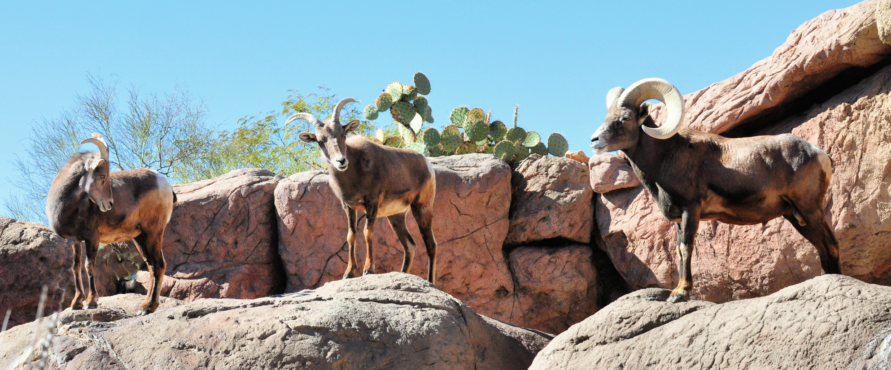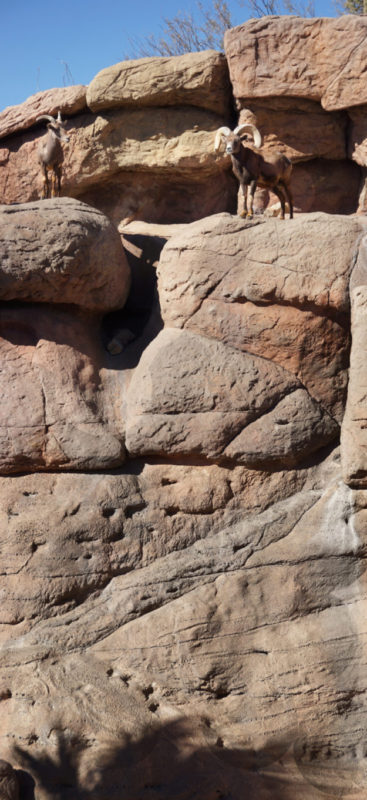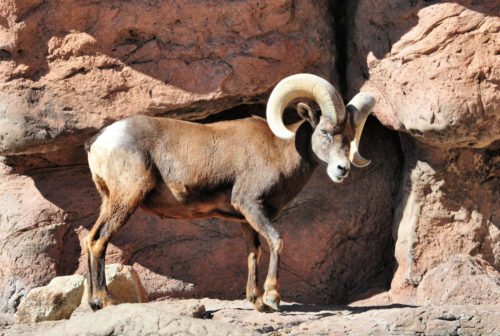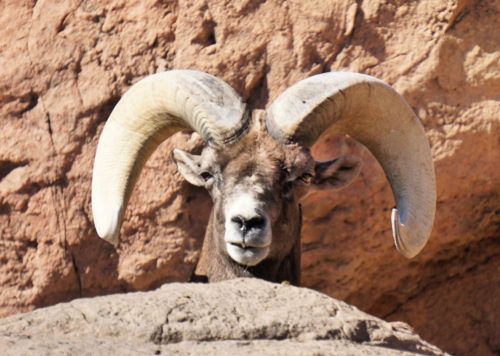Big Horn Sheep
by Jane St. Clair
I love big horn sheep. I believe every fantastic thing that anyone tells me about them because they’re that amazing.
Once a guide on a tour at Sabino Canyon told our group that big horn sheep have suckers on the bottoms of their feet, which is why they can climb straight up rocks. I believed him.

Because it looks like they have suckers on the bottom of their feet –or at least some kind of moon-walker thing—when you watch big horn sheep climb up the side of a mountain.
They look cool when they’re up so high. Big horn sheep definitely aren’t afraid of heights.
And then there’s those horns. Those horns are to die for. The horns can weigh 40 pounds on an animal that weighs about 300. How amazing is that? And look at the way the horns twist around the ram’s face, like beautiful coils on Princess Lelia. Gorgeous!

Here in Tucson, Arizona, government officials in charge of wildlife tried to reintroduce big horn sheep into Catalina State Park. Hundreds of them once roamed the mountains here,
but now their numbers have dropped. It’s not bad enough to put them on the endangered species lists, but enough that you never see them where people used to see them a lot.
About seven years ago, the Wildlife Service started dropping big horn sheep into Catalina Park. The animals had computer chips in them so the rangers could trace their every movement. Sadly, as biologists monitored their screens for signs of movement and life, they realized that most of the new big horn sheep were dying. It is true some died naturally through accidents and such, because they were not used to their new home.
Yet the main reason sheep were flat-lining was that they had become mountain lion food.
Something had to be done about hungry mountain lions.
Almost immediately, people around here divided into Team Lion and Team Big Horn Sheep. Team Sheep wanted everything possible done to save the sheep. Team Lion argued lions were just doing what lions got to do, so it’s not fair to shoot them to protect another species.

In the end, they reached a compromise. The Wildlife Service took new precautions with the second round of sheep they introduced into the park in the hope of making easier for them to survive, but they did shoot a few lions.
In 2018, about 65 sheep were living in Catalina State Park, and maybe 5,000 in the state of Arizona. So, with a little luck, the numbers will grow even bigger.
How lucky can we get?

Here’s looking at you, babe.
* * * * * * * * *

Read Jane’s short story, “The Year of the Tomato” in The Bangalore Review.

